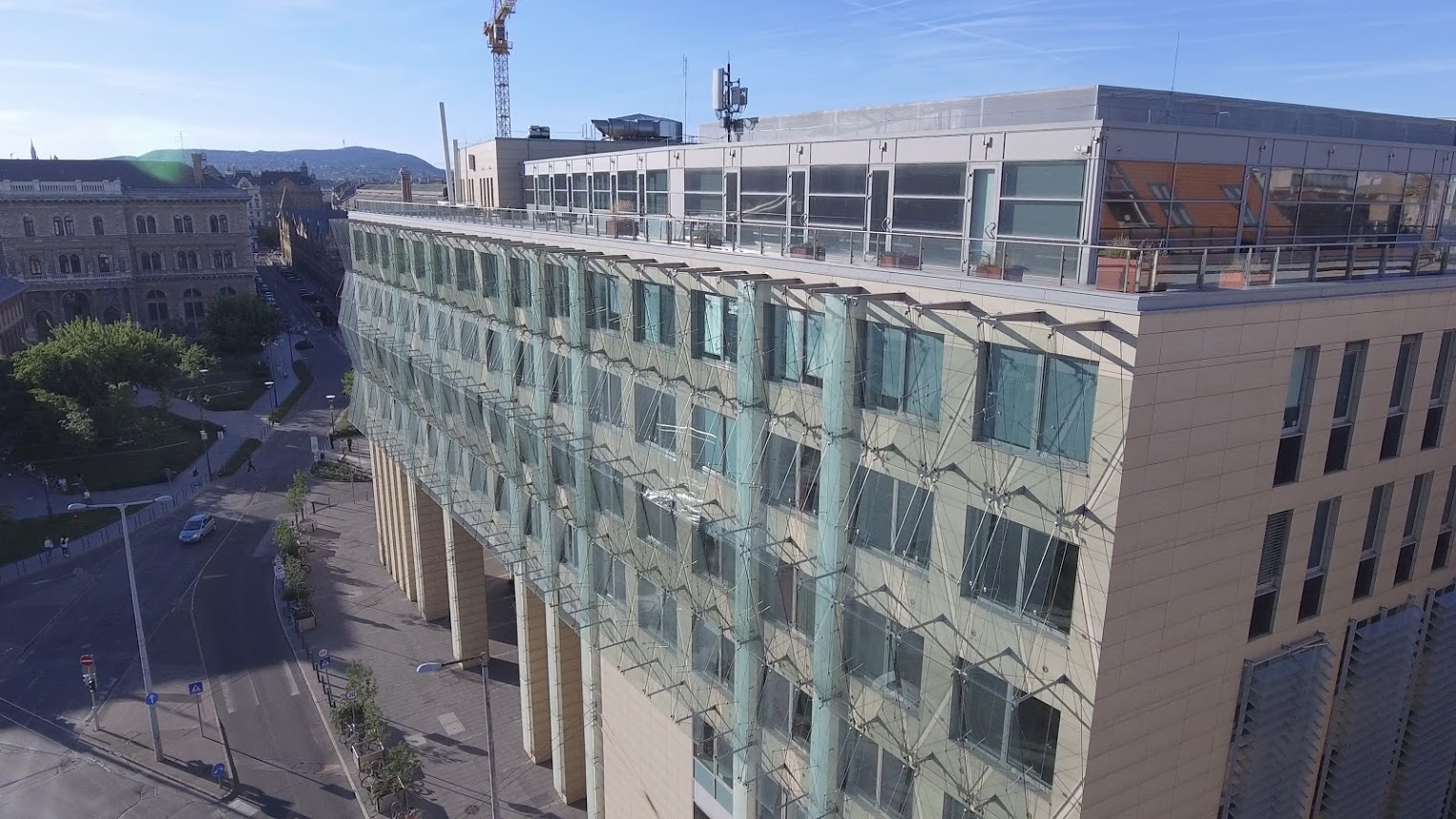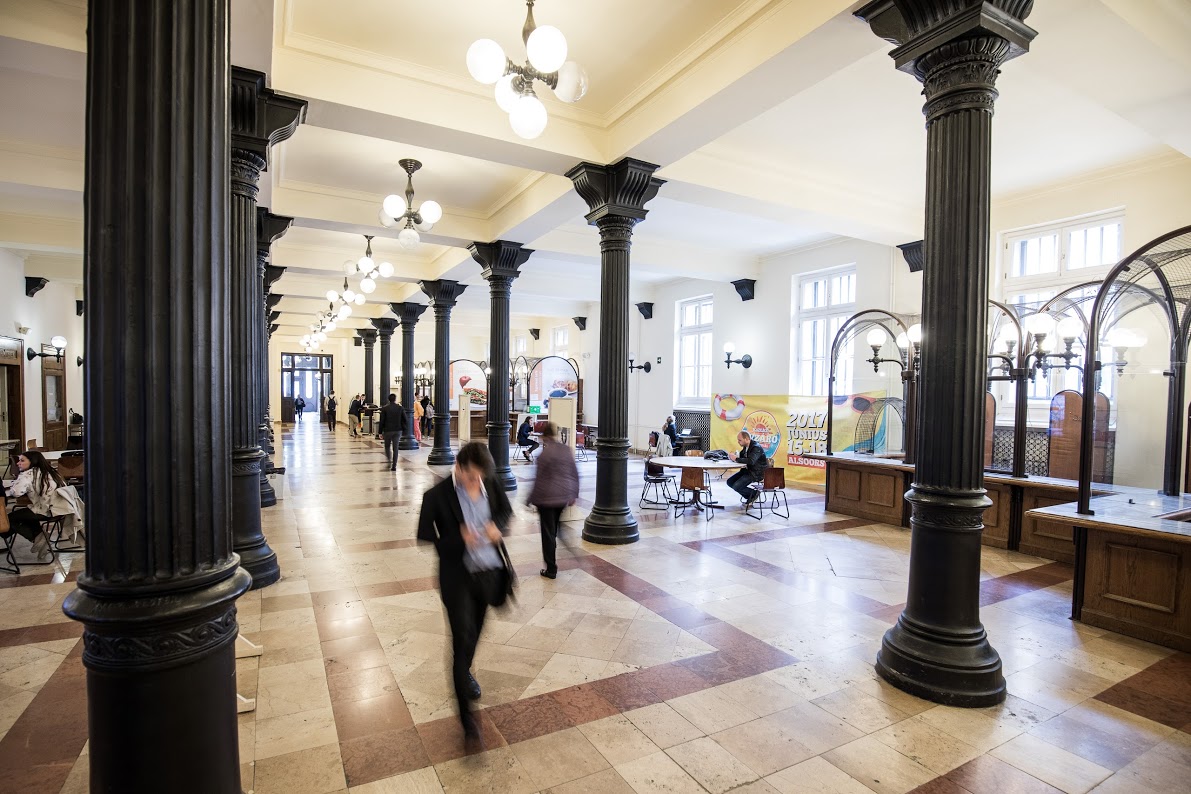“By the end of the next year want to work with at least 70 percent paperless processes.”
He graduated as an engineer and a teacher, he taught and then worked in telecommunications, however, he has been working in the management of Corvinus for 20 years: this is GáborCzinderi, who knows the university like the palm of his hand, since as the Head of Infrastructural Services he has insight into everything from cleaning to IT purchases. He has even more duties during the renewal, since the developments managed by him affect the functioning of the entire chancellery. We discussed the overregulation of governmental purchases, paperless administration and smart classrooms with him.

Infrastructural service can refer to a lot of areas. What activities do you manage exactly within Corvinus?
I manage the infrastructural services, therefore the purchases, the construction projects, the maintenance, the cleaning, and the scope of my duties includes the operation and maintenance of the IT infrastructure.
And what role do you have in the currently ongoing renewal?
I was commissioned to coordinate the tasks related to the complete renewal of the services provided by the chancellery, therefore in this project we carry out not only infrastructural services but developments affecting economic, legal and financial areas as well, jointly with the other managers of the chancellery.
How does the transition process affect your day-to-day work?
The transition rearranges our values and also our operation fundamentally. Previously, our main goals were the documentation and compliance with the government regulations, while now the keywords are customer satisfaction and flexibility.
When we were owned by the state, we performed our work well if we submitted accurate reports to the ministry, and if we documented everything property and completely . In the new system we are still happy if we prepare accurate reports, however, from now on success means if more people go to the university, or if the level of satisfaction of the students and faculty members is measurably higher than before in connection with the buildings and the services.
What do you think the largest difference is between the approaches of the state-funded and the foundation-funded structure?
The public sector is conditioned to that work does not have to be better than it was yesterday. The way it was yesterday will be good today as well, since the main prerequisite for success was satisfying a slowly changing, bureaucratic government regulation. Now this is not what success is: now success is when the internal clients are satisfied with us because our service is changing quickly and in a flexible manner, and we ourselves are able to renew continuously.
The management considering internal developments has never been a priority before, however, from now on managers are required to spend twenty percent of their working time with developments if they want to build an organisation that is successful in the long term.

Which development can bring the biggest change for the chancellery?
Our goal is to establish a uniform chancellery client portal, where our services are available in a digital format and in the simplest form possible. At the current stage we are examining how our processes could be simplified with the help of digitalisation, what has to be altered, what we have to let go and what we have to do again. The end is not in sight yet, however, we most likely have to come up with a solution which is able to combine several different communication channels, thereby adapting to the trends and opportunities predominant in the service sector.
A serious milestone of this will be that we plan to provide 70 percent of our processes in paperless form until 31st December 2021. Printed documents are mandatory in the public sector, as opposed to which, from now on internal messaging or a document affixed with digital signature could be sufficient for most of the processes. We cannot be entirely paperless, since we will continue to have to print numerous contracts afterwards as well, and it is mandatory to store paper-based documents in other areas as well. This could be the missing 30%, which ratio we will definitely be able to reduce even further in the long term.
In the structure used so far you knew that you were operating well if the audit found that everything was in order. How are you going to measure successful operation in the new structure?
If we consider the university as a whole, then we monitor the national and international rankings, as well as the student application data.
If we talk about the chancellery only, then we have to learn to measure our own performance. We will define KPI-s which will be measurable, reflect the success or lack of success of the managing of processes and matters, and we want to achieve the target figures set. I do not want to mention any specific example – we are at the very beginning of this – but examples could be decreasing the administration period of a given process by one day, or decreasing the number of data necessary for a given transaction significantly.
We want KPIs which actually show the performance of our service and reputation, and based on which we can actually interfere wherever a problem occurs.
How are the employees working in the organisation taking these changes?
The reception is mixed, because we are all a little “afraid”. We are now learning how the abstract demand for “being more satisfied with us” can be grasped. In my opinion, in the long term the KPI can help us with this, since it is a kind of tool to overcome the fear of the unknown. We have to reconsider our activity and the effects thereof systematically, and we are slowly realising all the things that can be changed in order to increase satisfaction, and if we do this well, then we will be able to show this changes with typical figures.
However, in addition to KPI, there is another role which has been fulfilled less previously, mostly in the leadership roles: the risk-taking. Risk-taking is characteristic for the private sector, since they try to avoid it at all levels of public finances, while reasonable risk-taking is a fundamental condition of efficient operations in the private sector. We still have to learn this.
An example: A manager engaged in investments has to be able to estimate the costs of a large alteration project, even if there is no time to have it planned in detail beforehand. If in case of a fast investment decision which is important to me I say that a renovation will cost 500 million HUF, and eventually the invoice amounts to double that amount, then I am presumably bad at my work and I am not suitable for the position. The structure of the public sector is designed so that no mistakes can be made, but this makes it slow; meanwhile, the private sector enables experience-based estimates, which makes it faster, however, if somebody makes a large mistakes, then there are consequences. However, this requires a very new approach in terms of personal liability and risk-taking, and the managers – including me – still have to undergo this transformation.
How will students notice of the developments?
We serve the faculty primarily, however, if we approach the infrastructure perspective, the developments affect the lives of the students indirectly. It is a welcome change that now we are measuring student needs with targeted surveys, and we prepare the investment decisions based on the results. One of the main lessons learned from the surveys conducted so far is the lack of community areas and “own” physical space. The students were attached to secondary school classrooms for years, and then at the university they find that they do not have a place where they could meet and be together. Therefore a lot of students cannot get attached to specific places or a university group either. This need is changing the renovation plans for next year significantly, and we might sacrifice other functions in the interest of temporary progress.
We want to create more active, smoother communication with the students and the university citizens in general (client portal, regular notices on the website), and in course of infrastructural developments and refurbishments we will aim at being more open in the future, which we are now learning how to do.
When is the university expected to have smart classrooms?
Smart classrooms has been a popular topic recently, because it enables hybrid education, and we already have classrooms where this is possible with varying levels of quality. However, the term “smart classroom” could mean various technical realisation methods, therefore there is always room for improvement. Accordingly, in addition to our existing capacities, by the beginning of the next semester we will refurbish four classrooms so that the people outside and in the classroom can cooperate as much as possible. Our classrooms provide good foundation for such developments; we established significant WiFi capacities in the classrooms, which are now essential at conferences but also provide appropriate infrastructure for including interactive classes in the schedule innovatively, even with the addition of the students’ own devices.